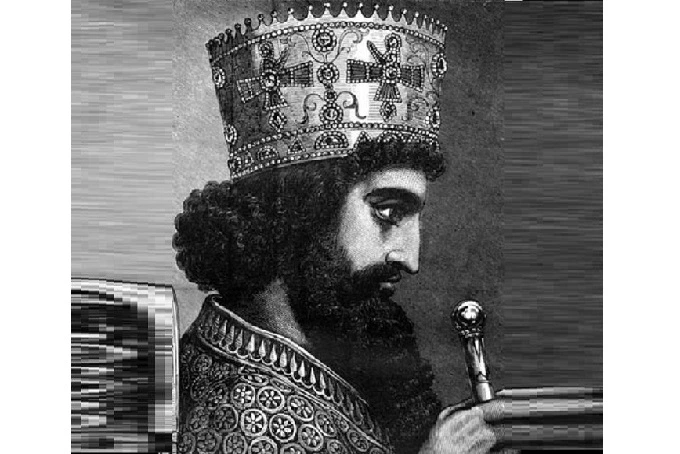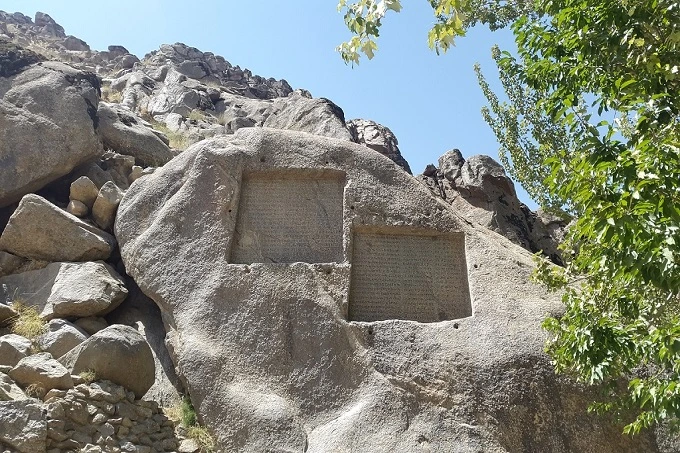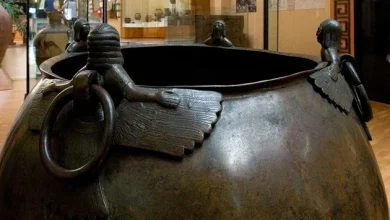Ganjnameh inscriptions: what did the ancient Persian kings encrypt in two tablets on the rock

Something unique can be found in the vicinity of the old city of Ecbatana (now known as Hamedan). On Mount Alvand, at the height of 2000 meters, two large panels have been carved into the rock. They possess cuneiform texts in their possession. This occurred under the reign of Darius I, often known as Darius the Great, and Xerxes I, his son. Following the Macedonian conquest of these territories, the meaning of the inscriptions became obscured, and there were no longer any people alive who were able to read them. The locals are under the impression that it holds a mysterious key that can be used to unlock a priceless treasure. This location was referred to as Ganjnameh, which also meant the Book of Treasures. Have today’s scientists been able to elaborate on this mystery?
The book of treasure
The city of Ganjnameh can be found in the western part of Iran today on there Darius the Great-built royal road’s northern branch. After travelling across the entire empire, one would arrive in Anatolia at Sardis, which was once located in Mesopotamia.
In this spot, right above where the waters of a mountain stream flow, mysterious Ganjnameh inscriptions have been cut into the nearby granite rocks. The plates have a width of 3 meters and a height of 2 meters. They are encircled by peculiar holes that are evenly spaced, and it’s possible that in the past, they were used to attach some type of protective covering. There is also a terrace carved into the rock that is located above the Ganjnameh inscriptions.

The inscription on the tablet on the left was written by Darius I the Great (549-486 BC), while the inscription on the tablet on the right was written by Darius’s son, Xerxes I. (519-465 BC). The text that has been engraved on both panels has been written in three different languages. During the reign of Darius I, this practice was followed for any and all Achaemenid inscriptions. There were no exceptions. The section of the text that can be found to the left is written in Old Persian, the section that can be found in the middle is written in New Elamite, and the section that can be found to the right is written in Neo-Babylonian. Cuneiform, a kind of writing used in ancient Persia, is the most recent writing system. There is a minimum requirement of only 34 characters. It was a script made up of letters that were read from left to right, and word separation was accomplished by using wedges that were slanted to the left. In order to write the Elamite and Babylonian versions of the text, respectively, two hundred and six hundred characters were required. After all, we are talking about syllables here.

The solution to deciphering the Ganjnameh inscriptions
In 1839, the French artist and archaeologist Eugene Flandin travelled to Iran as part of a business trip organized by the Institute of France. He spent time there studying ancient artifacts. He was responsible for producing many sketches and engravings, which were of considerable assistance to historians researching the history of the great old Persian empire. Additionally, Flandin illustrated cuneiform tablets carved into the rock. Henry Rawlinson, who is also known as the “founder of Assyriology,” was the one who eventually cracked the code of the text. According to Rawlinson, the Ganjnameh inscriptions were carved during one of Darius and Xerxes’ journeys. Every year, father and son would leave their royal home and travel to the Median kingdom’s capital and Babylon.
The following is what is written on the inscription of Xerxes: “The Great God is Ahura Mazda, the greatest of the gods, who created this earth, produced this sky, created man, created joy for man, and made Xerxes a king, a king among kings, and a ruler among rulers.” I am Xerxes, the great king, the king of kings, the king of many peoples’ lands, the king of this great distant land, and the son of the Achaemenid king Darius.
Modern version

Both tablets record Darius I the Great’s customary forms of expression and worship, which he created during his reign and which are still practiced today. These kinds of textual forms will appear again in a great number of inscriptions located all over the Persian Empire. The only thing that sets Xerxes’ inscription apart from the others is the presence of an additional predicate, which in this case refers to Ahura Mazda, the god of the Zoroastrian religion. He considers him to be the most powerful of the gods. Since the year 1995, translations into current Persian and English have been available for reading. On the twin granite rocks as the originals, they were inscribed next to the sources.




